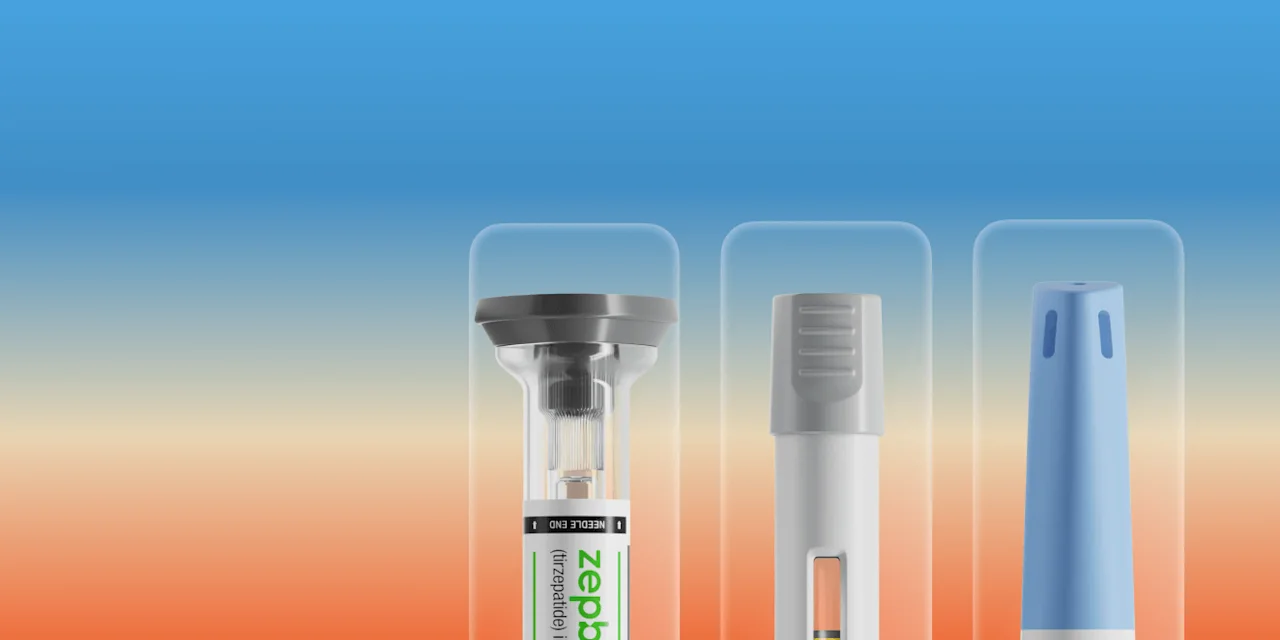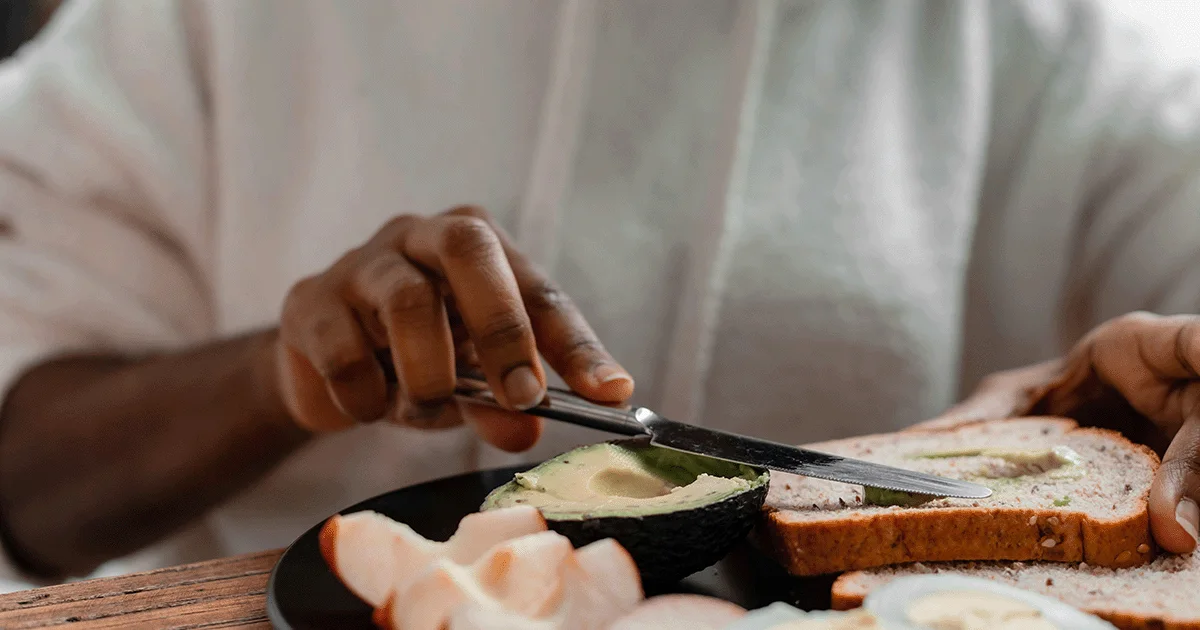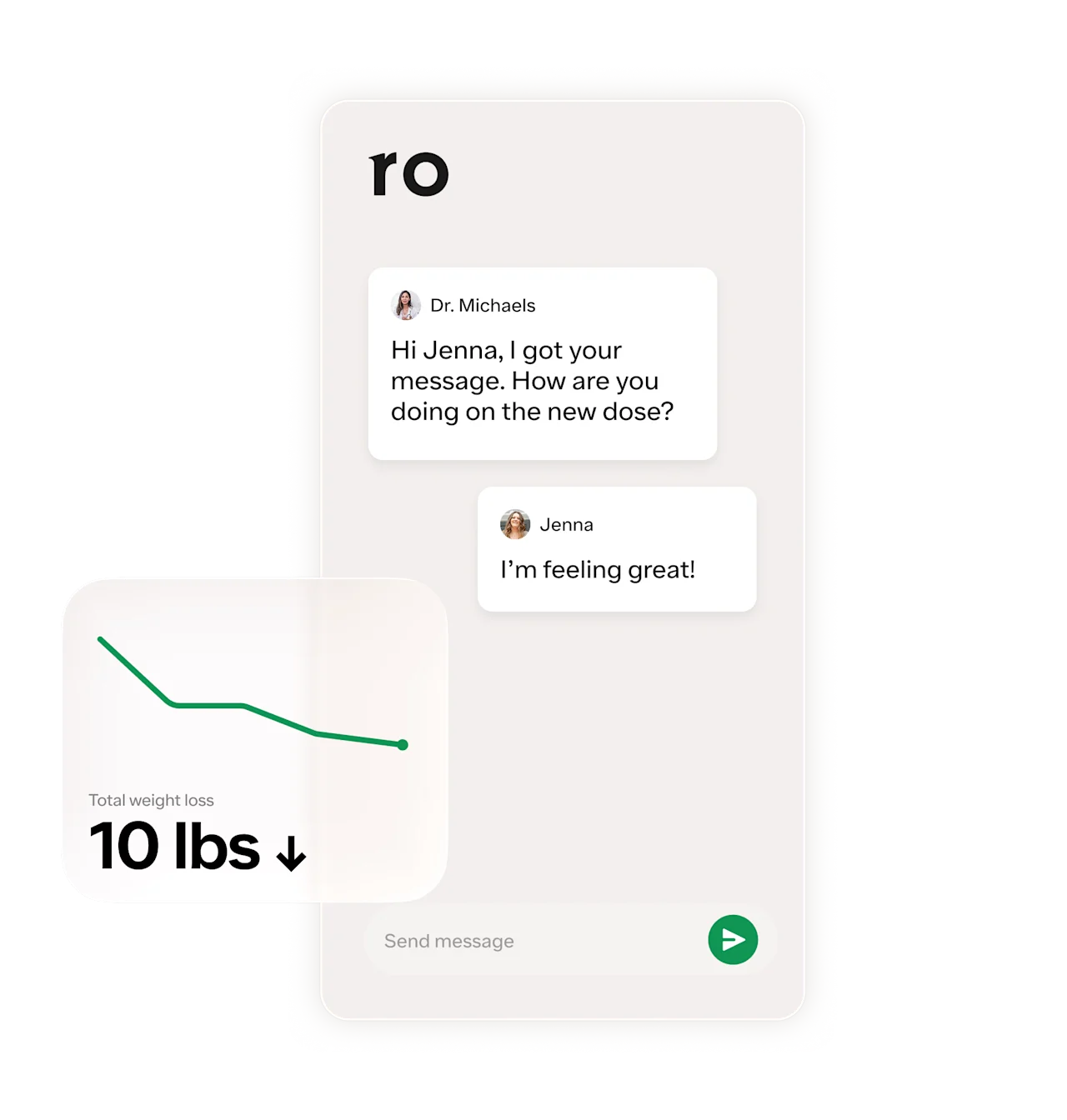Here's what we'll cover
Here's what we'll cover
Here's what we'll cover
The essential formula for weight loss looks something like this: eat a balanced diet that keeps you full on foods that are light on calories and make sure you get enough food to avoid your body stumbling into starvation mode. So, if you’re trying to lose weight, a smart place to start is your diet.
You can reliably lose weight by reducing how many calories you eat, in general. Or, you can replace “empty” calorie foods with more nutritious options, such as swapping sodas, candy, or other treats full of added sugar with the real thing — naturally sweet fresh fruit. Plus, incorporating more fruit into your diet offers other benefits to your overall health, including a lower risk of death from heart disease and cancer.
It sounds too good to be true: eat more (fruit) to lose weight. But, it works! Read on to learn how fruit helps with weight loss, and the best fruits to help you on your weight loss journey.
Does fruit help with weight loss?
Yes, fruit can absolutely help with weight loss, particularly if you’re replacing artificially sweetened foods with whole, fresh fruit. The weight loss effects of increased fruit consumption are even more pronounced when paired with a weight loss diet that decreases your intake of calorie-dense foods. Eating more whole fruit to lose weight (when paired with a healthy diet and weight loss plan) is also more effective in people who have overweight or obesity.
Many of us know that a healthy diet includes both fruits and vegetables, but research suggests that fruit offers something unique to weight loss and weight maintenance. Fruits are one of our main sources of daily fiber. They’re also very hydrating, with water making up 80% – 90% of a fruit’s total mass. Because fruits contain a lot of fiber and water, they promote feelings of fullness, despite being low in calories. This low caloric content combined with high satiety offers a one-two punch for healthy weight loss.
Plus, fruits tend to have a lot of other essential nutrients and minerals that are good for you — such as magnesium, potassium, folate, and vitamins B, C, and E — without the things that are not so good for you, such as artificial sweeteners, preservatives, cholesterol, and sodium.
However, because fruits contain a lot of natural sugar, simply adding them to your diet without using them to replace other, less healthy foods, can actually lead to weight gain. Fruit juice can also be a problem since it removes some of the nutrients of whole fruit while packing more sugar. Also, dried fruits tend to have many of the same nutrients as the whole fresh options but their lack of water content can leave you feeling hungrier than when you started.
If your goal is weight loss, the key is to substitute whole, fresh fruits for less healthy options instead.
The best fruits for weight loss
Multiple studies have found that increasing your fruit intake can help with both weight loss and weight management. Eating more whole, fresh fruit tends to lower your overall energy intake, all the more so when you snack on fruit before a meal or use fruit to replace more calorie-dense foods. Consider these nine options.
1. Grapefruits
Several studies have shown that grapefruit can aid in weight loss. While the weight loss effects are modest, grapefruit provides other health benefits that can be relevant for those looking to lose weight. For example, those who regularly eat grapefruit tend to have better diets overall, and to also get more vitamin C, magnesium, potassium, and dietary fiber.
In one study, individuals who ate half of a Rio-Red grapefruit three times a day for six weeks only experienced a little weight loss. But, they saw significant improvements in their waistlines, systolic blood pressure, and total and LDL cholesterol. Other studies have also found grapefruit drives improvements in systolic blood pressure; however, the weight loss was not statistically significant.
Regularly eating a grapefruit before a meal also tends to reduce a person’s total caloric intake, as does drinking water or grapefruit juice. Over the course of twelve weeks, those who ate a grapefruit (or drank water or grapefruit juice) ate up to 29% fewer calories, leading to an average weight loss of 7%, along with reductions in their body fat and waistlines.
Note: Grapefruit can affect the metabolism of certain medications, leading to a higher concentration of the drug in your body. If you take any medications — including drugs that treat cholesterol and high blood pressure — confirm that grapefruit does not interact with your medicine before adding it to your routine. If you have any questions about whether eating grapefruit is a good idea for you, ask your health provider.
2. Apples
One medium apple contains fewer than 100 calories and over 4 grams of fiber. Several studies have found that eating more apples can help with weight loss, including one analysis that followed men and women over a 24-year period. Eating more apples and pears was associated with an average weight loss of a little more than one pound.
Other studies have found that eating more apples leads to weight loss in premenopausal women and that lean women tend to have diets with more low-calorie foods, including apples, berries, avocados, and citrus fruits (which you’ll also find featured on this list).
Despite being low in calories, apples are a great source of fiber, as well as fruit polyphenols, which have been shown to fight obesity at a cellular level. Eating apples or drinking apple juice over a period of weeks can lead to weight loss in people with obesity. In particular, the polyphenols in apple juice have also been shown to help reduce belly fat.
3. Pears
Pears — along with apples, berries, prunes, and avocados — were found to be one of the five best fruits for weight loss in one large study of over 73,000 women.
In another study, when rats were fed a high-fat diet, those who were also given pear fiber did not gain weight to the same extent as those who did not eat pears. Among humans, eating fresh pairs daily for twelve weeks — specifically green Bartlett or D’anjou pears — reduced waistlines.
Pears also offer other benefits related to weight loss. For example, eating pears can improve exercise performance and boost recovery by lowering your cortisol levels.
4. Kiwifruit
The fiber in kiwifruit retains more water than apples and oranges, which may help boost weight loss. In one small study, people with obesity or overweight ate two golden kiwifruits daily for a period of six weeks. By the end of the study, their body fat had decreased, and their blood pressure had improved.
Eating more kiwi can be as easy as adding it to your breakfast. When people swap out some of their cereal calories for kiwifruit, their fruit consumption increases, and their blood pressure improves, according to one study.
Kiwifruit can be helpful with maintaining a healthy weight as well. As a low-glycemic fruit, kiwifruit doesn’t spike blood sugar levels, making it a good fit for people with type 2 diabetes. And they contain about three times more vitamin C than oranges or strawberries, making them a good source of the essential vitamin!
5. Oranges
Speaking of vitamin C, the vitamin’s ambassador fruit is also an aid to weight loss, thanks to its high fiber content. One medium orange boasts 3 grams of fiber and 62 calories. The key here is to eat whole oranges as opposed to drinking OJ, though, which is much less filling and has way more sugar.
If you’re not a fan of orange slices, you can still enjoy the fruit’s weight loss benefits. In one six-month study, those who took a blood orange extract daily lost twice as much body mass compared to those taking a placebo. They also lost more body fat, both all over their body and around their waist and hips.
6. Avocados
At 83 calories and 3.4 grams of fiber, avocado was found to be one of the best fruits for weight loss in one study. Long-term studies have found that adults who eat more Hass avocados are less likely to become overweight than those who don’t regularly eat the so-called “alligator pear.”
They are also more likely to eat more vegetables and less sugar — leading to lower body weight and smaller waistlines. For women in particular, eating one avocado a day for 12 weeks can lead to a reduction in belly fat.
In addition to supporting weight loss, avocados offer a long list of health benefits, including:
A lower risk of becoming overweight or obese
A lower risk of heart disease
A reduction in belly fat (for women with overweight or obesity)
Improved cognitive function
Improved colon health
7. Stone fruits (cherries, peaches, plums, etc.)
Stone fruits describe fruits that have a pit, or stone, on the inside. Think cherries, peaches, nectarines, plums, and apricots. These fruits are not very energy-dense — meaning that they don’t have a ton of calories — and they typically have a low glycemic index, so they won’t cause blood sugar spikes, either. For example, one medium-sized peach contains just 57 calories, plus 2 grams of fiber.
Dried versions of stone fruits, such as prunes, have also been shown to be beneficial for weight loss. Others, like peaches, have an inhibitory effect on the enzymes that contribute to obesity, while the antioxidants in cherries can reduce inflammation that contributes to obesity. Keep in mind, though, that it can be easy to polish off four or five dried peaches, when it’s unlikely you’d be able to eat the same number of fresh peaches. Opt for the same quantity of the dried version you’d likely have of the fresh and add a glass of water to avoid eating too many of this delicious snack.
8. Berries
Berries, including strawberries and blueberries, can help promote weight loss and a lower body mass index, or BMI. A cup of blueberries contains 84 calories and 3.6 grams of fiber, while a cup of strawberries is less than 50 calories, with nearly 3 grams of fiber.
Having a few berries prior to having a meal led people to eat less during that meal, according to a small study of premenopausal women. Plus, regularly eating berries is associated with a lower risk of type 2 diabetes. The association is strong enough for researchers to recommend eating berries, or berry extracts, along with a balanced diet, and increasing physical activity to prevent type 2 diabetes.
9. Melons
At last, we have melons rounding out our list of the best fruits for weight loss. Melons, including cantaloupe and watermelon, can both contribute to weight loss. In particular, watermelon stands out for supporting weight loss efforts, with one serving containing 84 calories and 1 gram of fiber. But be aware that watermelon also can be particularly sweet, so it may be a good idea to limit your consumption if you’re worried about having too much sugar.
Melons have a high water content. Water fills your belly, increasing feelings of fullness. While more research is needed, studies do indicate an association between drinking water and weight loss. The association seems to be strongest among those who are trying to lose weight through dieting and increasing their water consumption as part of that.
How much fruit should you eat?
Now that you have a list of fruits to enjoy, how much fruit should you eat for a balanced diet? Aiming for 640 – 800 grams per day of fruits and vegetables combined is a good goal. For fruit in particular, the latest Dietary Guidelines for Americans recommend eating between 1.5 — 2 cups of fruit daily — an amount that only about 1 in 8 adults meet. For reference, 1 cup is about the size of a medium apple or a tennis ball. So, go for gold and add some fruits to your daily routine!
DISCLAIMER
If you have any medical questions or concerns, please talk to your healthcare provider. The articles on Health Guide are underpinned by peer-reviewed research and information drawn from medical societies and governmental agencies. However, they are not a substitute for professional medical advice, diagnosis, or treatment.
References
Akazome, Y., Kametani, N., Kanda, T., et al. (2010). Evaluation of safety of excessive intake and efficacy of long-term intake of beverages containing apple polyphenols. Journal of Oleo Science, 59(6), 321–338. doi:10.5650/jos.59.321. Retrieved from https://pubmed.ncbi.nlm.nih.gov/20484838/
Asgary, S., Rastqar, A., & Keshvari, M. (2018). Weight Loss Associated With Consumption of Apples: A Review. Journal of the American College of Nutrition, 37(7), 627–639. doi:10.1080/07315724.2018.1447411. Retrieved from https://pubmed.ncbi.nlm.nih.gov/29630462/
Aune, D., Giovannucci, E., Boffetta, P., et al. (2017). Fruit and vegetable intake and the risk of cardiovascular disease, total cancer and all-cause mortality-a systematic review and dose-response meta-analysis of prospective studies. International Journal of Epidemiology, 46(3), 1029–1056. doi:10.1093/ije/dyw319. Retrieved from https://www.ncbi.nlm.nih.gov/pmc/articles/PMC5837313/
Bailey, D. G., Dresser, G., & Arnold, J. M. (2013). Grapefruit-medication interactions: forbidden fruit or avoidable consequences?. CMAJ : Canadian Medical Association Journal = Journal de l'Association Medicale Canadienne, 185(4), 309–316. doi:10.1503/cmaj.120951. Retrieved from https://www.ncbi.nlm.nih.gov/pmc/articles/PMC3589309/
Bertoia, M. L., Mukamal, K. J., Cahill, L. E., et al. (2015). Changes in Intake of Fruits and Vegetables and Weight Change in United States Men and Women Followed for Up to 24 Years: Analysis from Three Prospective Cohort Studies. PLoS Medicine, 12(9), e1001878. doi:10.1371/journal.pmed.1001878. Retrieved from https://www.ncbi.nlm.nih.gov/pmc/articles/pmid/26394033/
Briskey, D., Malfa, G. A., & Rao, A. (2022). Effectiveness of "Moro" Blood Orange Citrus sinensis Osbeck (Rutaceae) Standardized Extract on Weight Loss in Overweight but Otherwise Healthy Men and Women-A Randomized Double-Blind Placebo-Controlled Study. Nutrients, 14(3), 427. doi:10.3390/nu14030427. Retrieved from https://www.ncbi.nlm.nih.gov/pmc/articles/PMC8838101/
Castro-Acosta, M. L., Lenihan-Geels, G. N., Corpe, C. P., et al. (2016). Berries and anthocyanins: promising functional food ingredients with postprandial glycaemia-lowering effects. The Proceedings of the Nutrition Society, 75(3), 342–355. doi:10.1017/S0029665116000240. Retrieved from https://pubmed.ncbi.nlm.nih.gov/27170557/
Dong, H., Sargent, L. J., Chatzidiakou, Y., et al. (2016). Orange pomace fibre increases a composite scoring of subjective ratings of hunger and fullness in healthy adults. Appetite, 107, 478–485. doi:10.1016/j.appet.2016.08.118. Retrieved from https://pubmed.ncbi.nlm.nih.gov/27578252/
Dreher, M. L., Cheng, F. W., & Ford, N. A. (2021). A Comprehensive Review of Hass Avocado Clinical Trials, Observational Studies, and Biological Mechanisms. Nutrients, 13(12), 4376. doi:10.3390/nu13124376. Retrieved from https://www.ncbi.nlm.nih.gov/pmc/articles/PMC8705026/
Dow, C. A., Going, S. B., Chow, H. H., et al. (2012). The effects of daily consumption of grapefruit on body weight, lipids, and blood pressure in healthy, overweight adults. Metabolism: Clinical and Experimental, 61(7), 1026–1035. doi:10.1016/j.metabol.2011.12.004. Retrieved from https://pubmed.ncbi.nlm.nih.gov/22304836/
Dreher, M. L. & Ford, N. A. (2020). A Comprehensive Critical Assessment of Increased Fruit and Vegetable Intake on Weight Loss in Women. Nutrients, 12(7), 1919. doi:10.3390/nu12071919. Retrieved from https://www.ncbi.nlm.nih.gov/pmc/articles/PMC7399879/
Fulgoni, V. L., 3rd, Dreher, M., & Davenport, A. J. (2013). Avocado consumption is associated with better diet quality and nutrient intake, and lower metabolic syndrome risk in US adults: results from the National Health and Nutrition Examination Survey (NHANES) 2001-2008. Nutrition Journal, 12, 1. doi:10.1186/1475-2891-12-1. Retrieved from https://www.ncbi.nlm.nih.gov/pmc/articles/PMC3545982/
Guyenet, S. J. (2019). Impact of Whole, Fresh Fruit Consumption on Energy Intake and Adiposity: A Systematic Review. Frontiers in Nutrition, 6, 66. doi:10.3389/fnut.2019.00066. Retrieved from https://pubmed.ncbi.nlm.nih.gov/31139631/
Heskey, C., Oda, K., & Sabaté, J. (2019). Avocado Intake, and Longitudinal Weight and Body Mass Index Changes in an Adult Cohort. Nutrients, 11(3), 691. doi:10.3390/nu11030691. Retrieved from https://www.ncbi.nlm.nih.gov/pmc/articles/PMC6471050/
Hong, S. Y., Lansky, E., Kang, S. S., et al. (2021). A review of pears (Pyrus spp.), ancient functional food for modern times. BMC Complementary Medicine and Therapies, 21(1), 219. doi:10.1186/s12906-021-03392-1. Retrieved from https://www.ncbi.nlm.nih.gov/pmc/articles/PMC8409479/
James, L. J., Funnell, M. P., & Milner, S. (2015). An afternoon snack of berries reduces subsequent energy intake compared to an isoenergetic confectionary snack. Appetite, 95, 132–137. doi:10.1016/j.appet.2015.07.005. Retrieved from https://pubmed.ncbi.nlm.nih.gov/26162950/
Khan, N. A., Edwards, C. G., Thompson, S. V., et al. (2021). Avocado Consumption, Abdominal Adiposity, and Oral Glucose Tolerance Among Persons with Overweight and Obesity. The Journal of Nutrition, 151(9), 2513–2521. doi:10.1093/jn/nxab187. Retrieved from https://www.ncbi.nlm.nih.gov/pmc/articles/PMC8417923/
Kim, J. Y. (2021). Optimal Diet Strategies for Weight Loss and Weight Loss Maintenance. Journal of Obesity & Metabolic Syndrome, 30(1), 20–31. doi:10.7570/jomes20065. Retrieved from https://pubmed.ncbi.nlm.nih.gov/33107442/
Lee, S. H., Moore, L. V., Park, S., et al. (2022). Adults Meeting Fruit and Vegetable Intake Recommendations - United States, 2019. MMWR. Morbidity and Mortality Weekly Report, 71(1), 1–9. doi:10.15585/mmwr.mm7101a1. Retrieved from https://pubmed.ncbi.nlm.nih.gov/34990439/
Monro, J., Lubransky, A., Mishra, S., et al. (2022). Metabolic and Blood Pressure Effects of Consuming Two Kiwifruit Daily for 7 Weeks: A Randomised Controlled Trial. Nutrients, 14(13), 2678. doi:10.3390/nu14132678. Retrieved from https://www.ncbi.nlm.nih.gov/pmc/articles/PMC9268970/
Muckelbauer, R., Sarganas, G., Grüneis, A., et al. (2013). Association between water consumption and body weight outcomes: a systematic review. The American Journal of Clinical Nutrition, 98(2), 282–299. doi:10.3945/ajcn.112.055061. Retrieved from https://pubmed.ncbi.nlm.nih.gov/23803882/
Murphy, M. M., Barraj, L. M., & Rampersaud, G. C. (2014). Consumption of grapefruit is associated with higher nutrient intakes and diet quality among adults, and more favorable anthropometrics in women, NHANES 2003-2008. Food & Nutrition Research, 58, 10.3402/fnr.v58.22179. doi:10.3402/fnr.v58.22179. Retrieved from https://www.ncbi.nlm.nih.gov/pmc/articles/PMC4016745/
Nowicka, P., Wojdyło, A., & Laskowski, P. (2018). Inhibitory Potential against Digestive Enzymes Linked to Obesity and Type 2 Diabetes and Content of Bioactive Compounds in 20 Cultivars of the Peach Fruit Grown in Poland. Plant Foods for Human Nutrition (Dordrecht, Netherlands), 73(4), 314–320. doi:10.1007/s11130-018-0688-8. Retrieved from https://pubmed.ncbi.nlm.nih.gov/30284108/
Onakpoya, I., O'Sullivan, J., Heneghan, C., et al. (2017). The effect of grapefruits (Citrus paradisi) on body weight and cardiovascular risk factors: A systematic review and meta-analysis of randomized clinical trials. *Critical Reviews in Food Science and Nutrition, 57(*3), 602–612. doi:10.1080/10408398.2014.901292. Retrieved from https://pubmed.ncbi.nlm.nih.gov/25880021/
Park, H. A. (2021). Fruit Intake to Prevent and Control Hypertension and Diabetes. Korean Journal of Family Medicine, 42(1), 9–16. doi:10.4082/kjfm.20.0225. Retrieved from https://www.ncbi.nlm.nih.gov/pmc/articles/PMC7884895/
Richardson, D. P., Ansell, J., & Drummond, L. N. (2018). The nutritional and health attributes of kiwifruit: a review. European Journal of Nutrition, 57(8), 2659–2676. doi:10.1007/s00394-018-1627-z. Retrieved from https://www.ncbi.nlm.nih.gov/pmc/articles/PMC6267416/
Roy, P., Tomassoni, D., Traini, E., et al. (2021). Natural Antioxidant Application on Fat Accumulation: Preclinical Evidence. Antioxidants (Basel, Switzerland), 10(6), 858. doi:10.3390/antiox10060858. Retrieved from https://www.ncbi.nlm.nih.gov/pmc/articles/PMC8227384/
Schroder, K. E. (2010). Effects of fruit consumption on body mass index and weight loss in a sample of overweight and obese dieters enrolled in a weight-loss intervention trial. Nutrition (Burbank, Los Angeles County, Calif.), 26(7-8), 727–734. doi:10.1016/j.nut.2009.08.009. Retrieved from https://pubmed.ncbi.nlm.nih.gov/20022464/
Sharma, S. P., Chung, H. J., Kim, H. J., et al. (2016). Paradoxical Effects of Fruit on Obesity. Nutrients, 8(10), 633. doi:10.3390/nu8100633. Retrieved from https://www.ncbi.nlm.nih.gov/pmc/articles/PMC5084020/
Silver, H. J., Dietrich, M. S., & Niswender, K. D. (2011). Effects of grapefruit, grapefruit juice and water preloads on energy balance, weight loss, body composition, and cardiometabolic risk in free-living obese adults. Nutrition & Metabolism, 8(1), 8. doi:10.1186/1743-7075-8-8. Retrieved from https://www.ncbi.nlm.nih.gov/pmc/articles/PMC3039556/
Thornton, S. N. (2016). Increased Hydration Can Be Associated with Weight Loss. Frontiers in Nutrition, 3, 18. doi:10.3389/fnut.2016.00018. Retrieved from https://www.ncbi.nlm.nih.gov/pmc/articles/PMC4901052/
Yang, H. Y., Wang, W. H., Zhan, J. Y., et al. (2020). Beneficial Effects of Golden Kiwifruit Consumption in Overweight and Obese Young Adults. Journal of Nutritional Science and Vitaminology, 66(Supplement), S356–S360. doi:10.3177/jnsv.66.S356. Retrieved from https://pubmed.ncbi.nlm.nih.gov/33612624/











